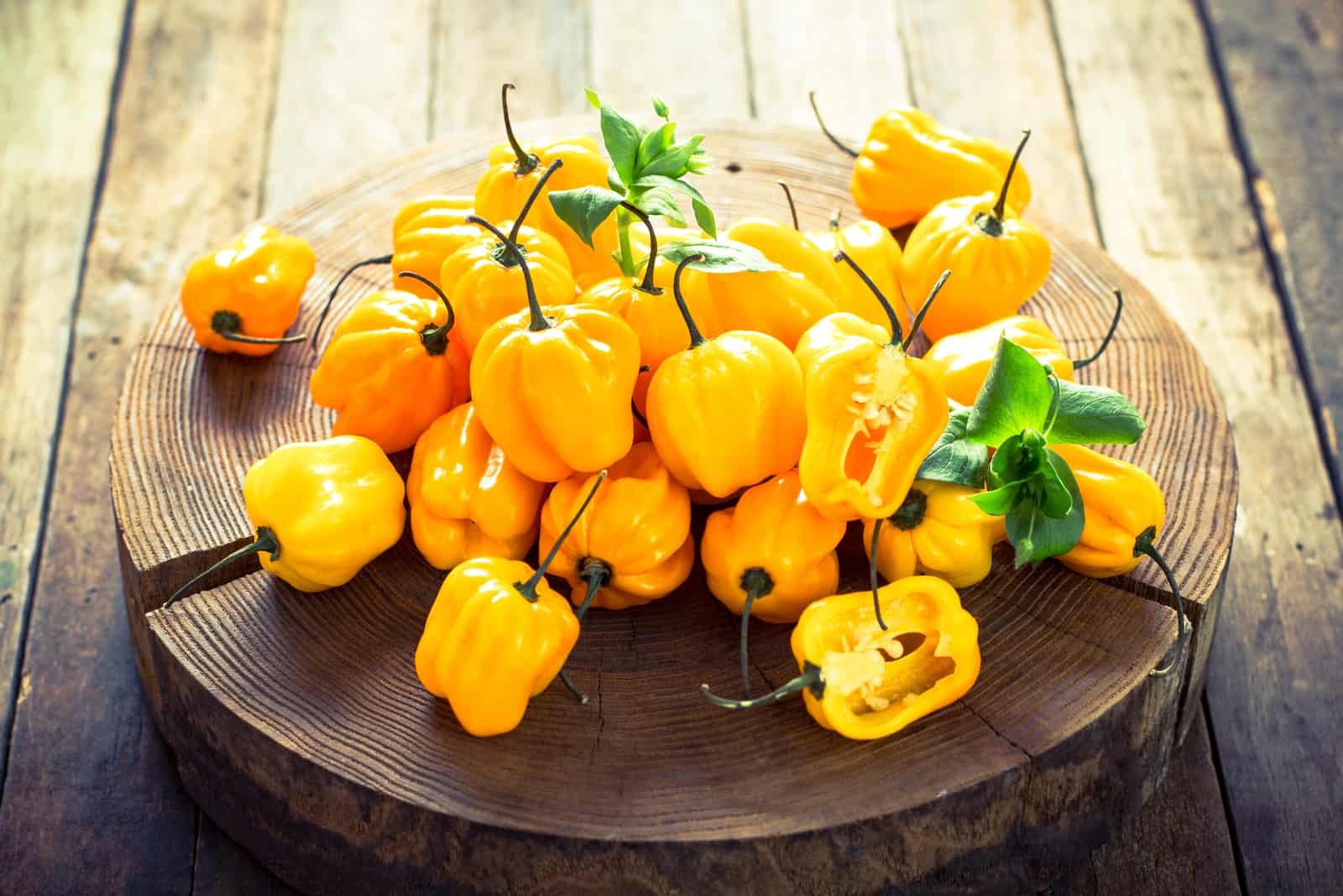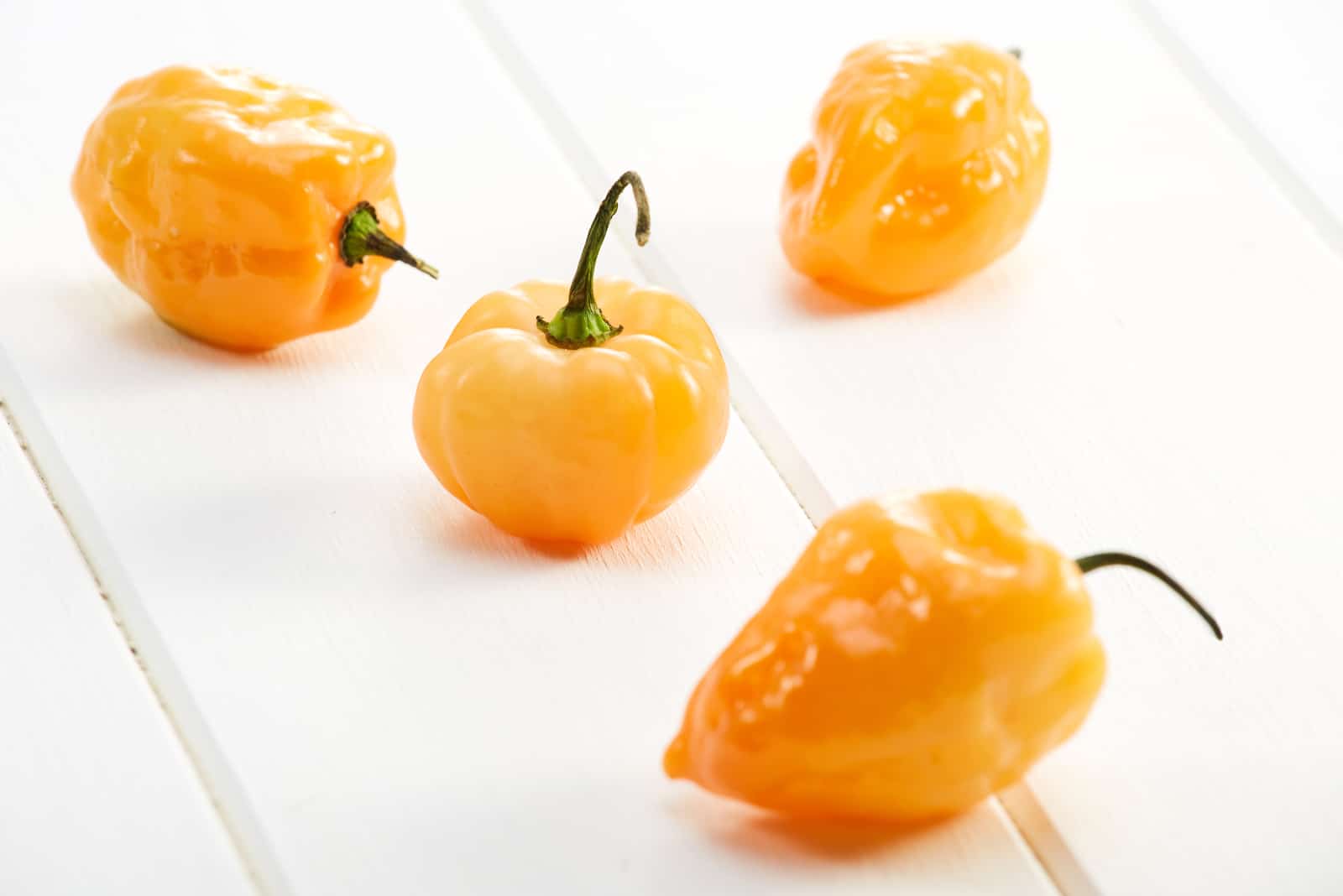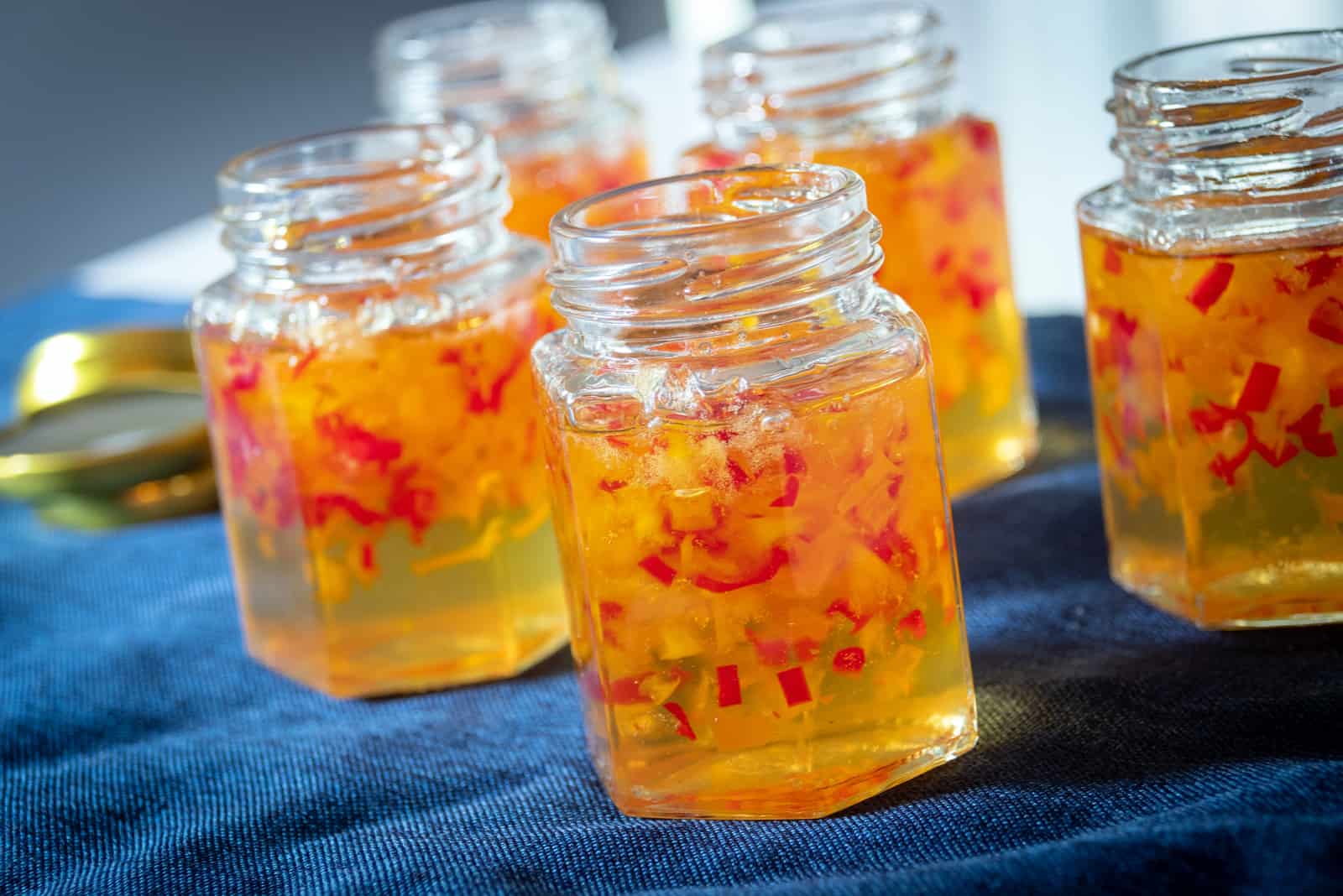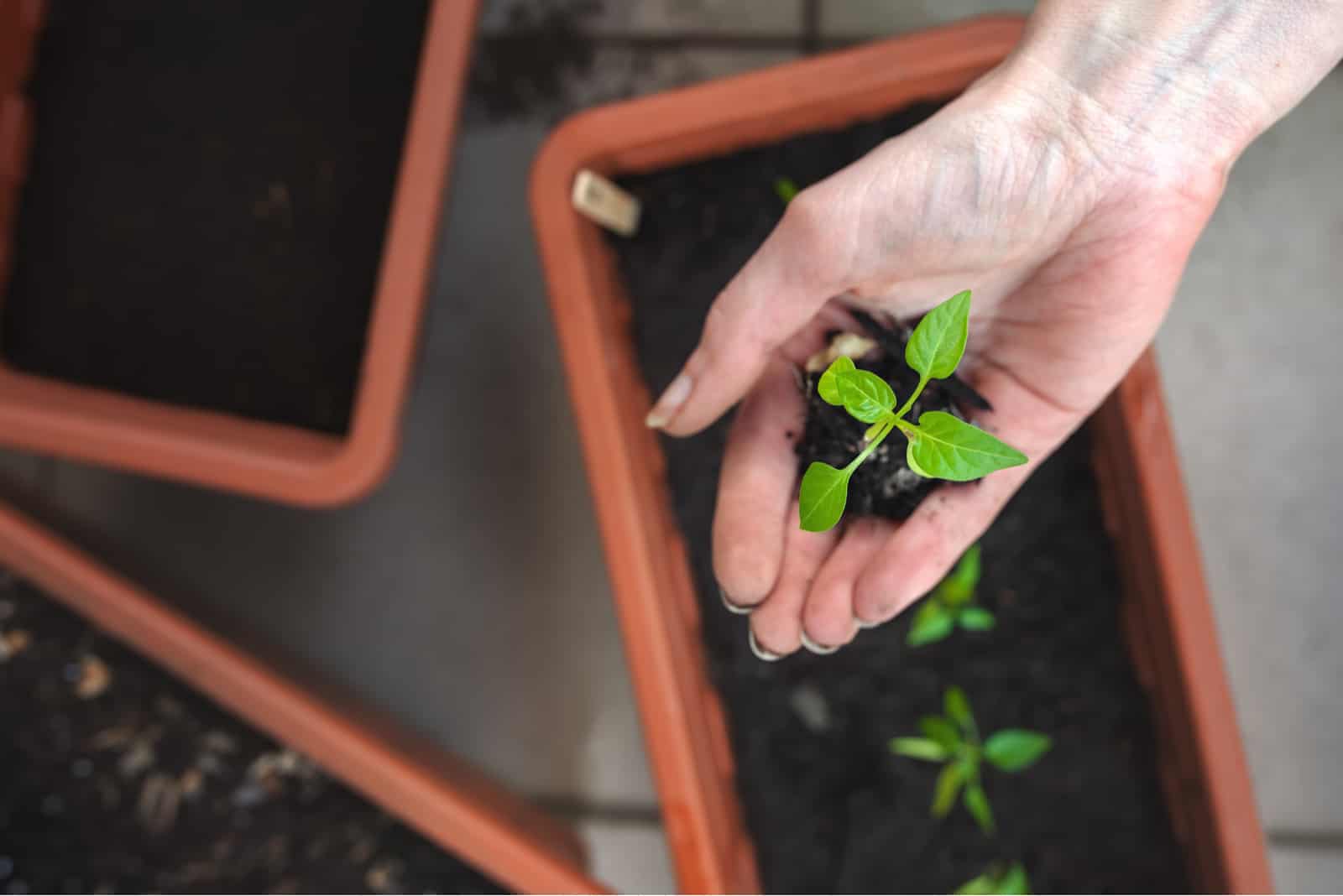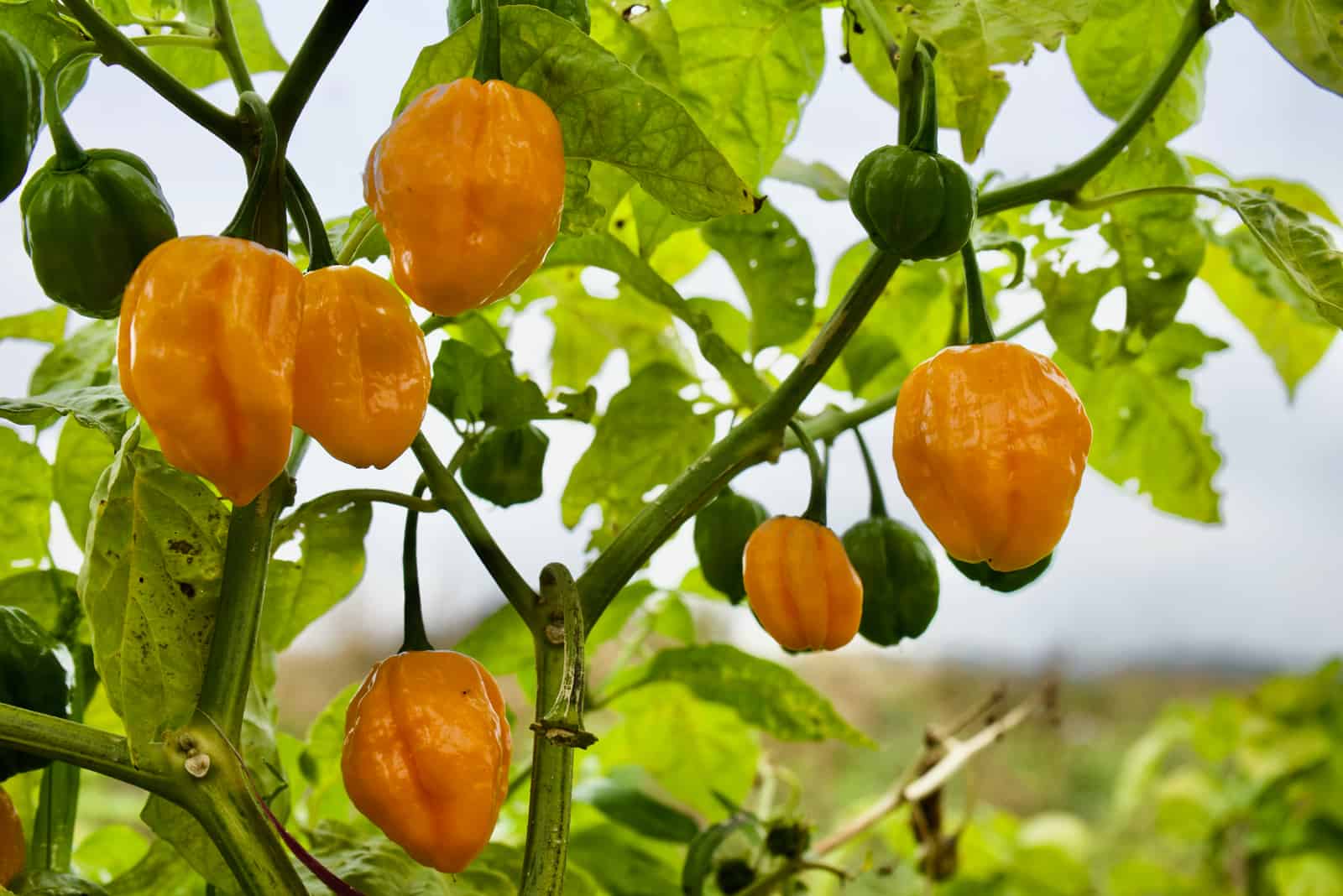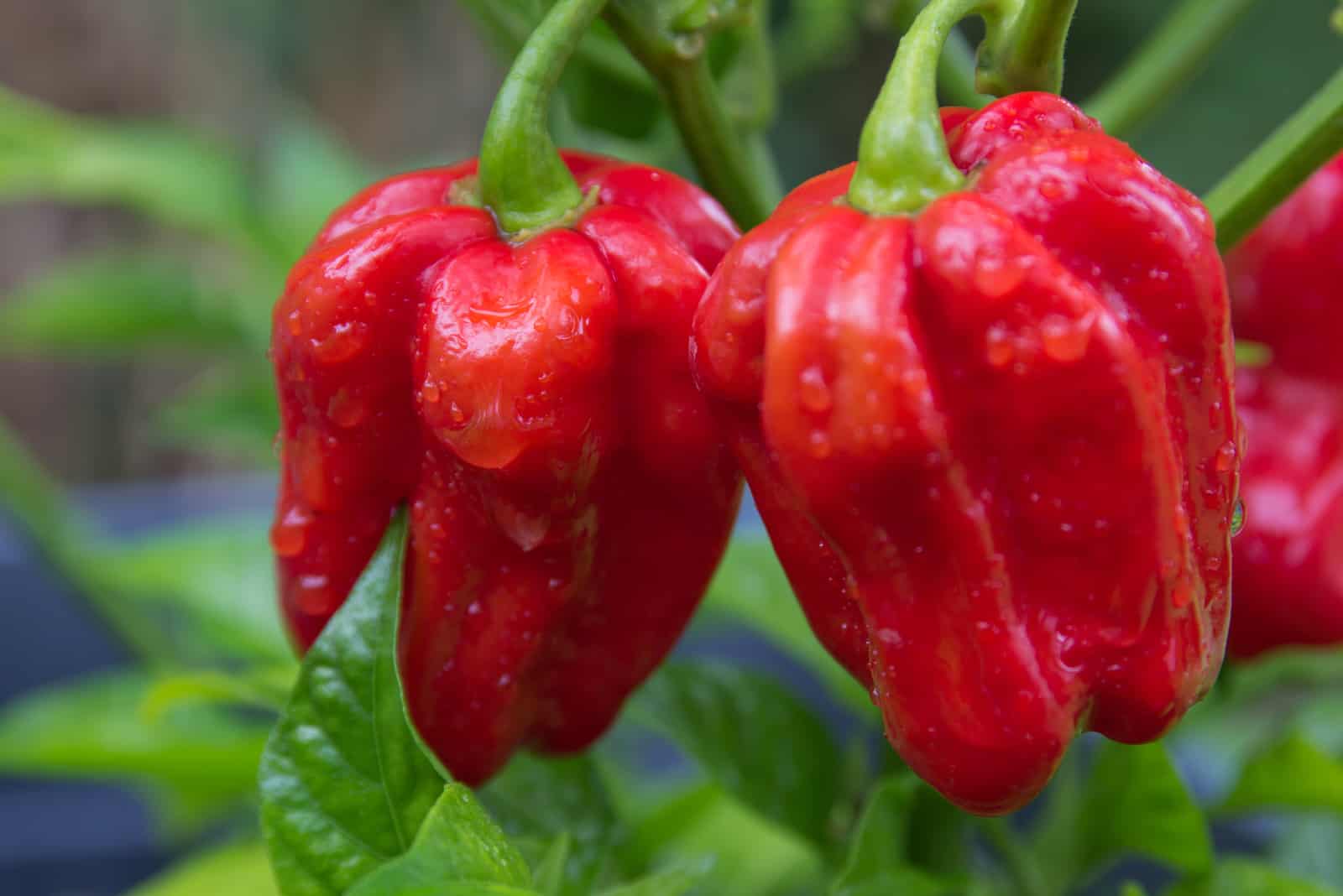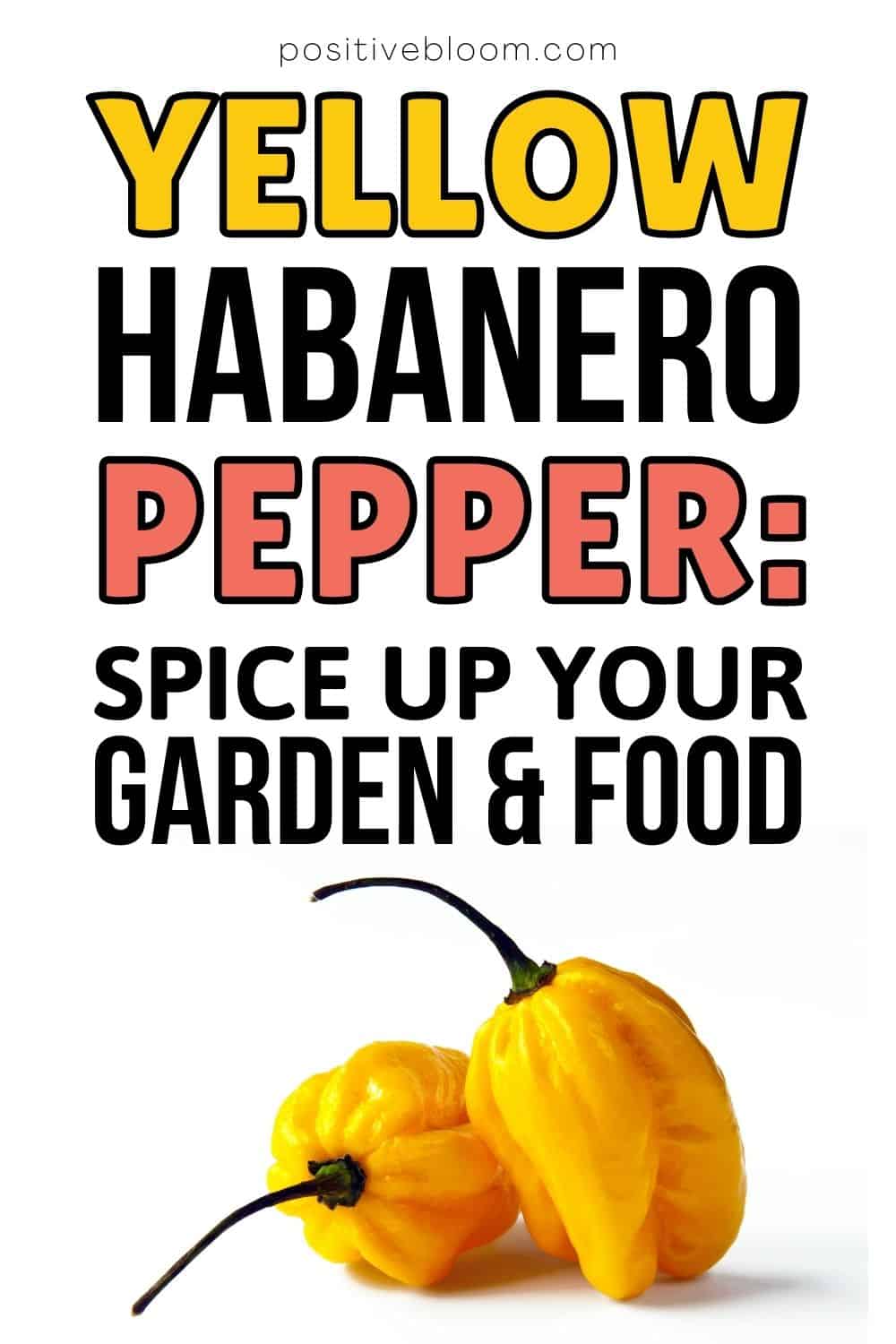If you are a fan of super spicy foods, then you must have heard about one of the most hot peppers; the habanero!
The Habanero is a chilli pepper that originates from the Yucatan Peninsula of Mexico, although it sometimes gets mistaken for Caribbean chili peppers as they have a similar taste.
The Yellow habanero, latin name Capsicum Chinense, was considered as one of the hottest peppers back in 1999.
Nowadays there are much hotter foods than Habanero peppers, such as Jalapenos, Cayenne, Serrano, and the Carolina Reaper, which is one of the spiciest pepper plants.
If you are interested in growing your own yellow habaneros to make all kinds of spicy dishes, read the rest of this article to find out everything you need to know and more.
About The Yellow Habanero
The color red is often associated with spicy flavors. Although this habanero, as the name suggests, has a yellow to orange color that can be quite deceiving.
Don’t be fooled by its pretty color, this pepper is really hot!
Heat levels can actually be measured in Scoville heat units (SHU).
The habanero yellow ranges from 100,000 to 350,000 SHU, which makes it one of the hottest peppers in the world!
A Typical habanero yellow is lantern-shaped when ripe, and has a fruity and delicious flavor. They are used as hot spices when dried because in this state they only provide heat.
The Yellow habanero is just one type of many different habanero peppers. They come in many different colors and shapes, such as the orange habanero, white, green, and of course the red habanero.
Nutrition
Vitamin A, B, and C, potassium, magnesium, riboflavin, and capsaicin are just a few of the beneficial components found in habanero peppers.
These peppers do not contain any saturated fats or cholesterol and are high in fiber and low in calories (18 calories per pepper). Just one pepper will give you the daily recommended intake of Vitamin C!
This makes sense as they have much more vitamin C than oranges!
They contain a chemical substance known as capsaicin, which is what makes them spicy.
This substance is a natural anti-inflammatory agent that can be beneficial to humans, so it’s no wonder spice junkies are super healthy.
They can also boost your metabolism!
I think we should change the famous saying to: “A pepper a day keeps the doctor away”!
If you are interested in knowing more about the nutrition and the health benefits of yellow habanero, check out this article.
Applications
The possibilities are endless when it comes to yellow habanero peppers! Raw, dried, pickled, or cooked; no matter the state, they can be used in all sorts of recipes.
If you don’t know what to do with your yellow habanero, checkout the list below to find some fun ways to use habanero peppers.
1. Hot sauces
They are famous for their hot flavor, so are primarily used to make hot sauces. If you were lucky during the growth season and harvested a large batch, you can use them to make the perfect hot sauce or your very own salsa.
2. Pickled yellow habaneros
Another thing you can do with a large batch is pickle them. But don’t worry, they will retain their hot flavor, which makes them perfect to eat during winter as they can warm you up quickly!
3. Jams
If you are a fan of mixing sweet and spicy flavors, then jam made out of habanero peppers is the perfect thing for you. They are just the right amount of sweet and spicy, and the flavors are going to melt on your tongue!
4. Chili powder
You can also dry your yellow habaneros and make a killer chili powder! It’s pretty simple, just put them in the oven or hang them out in the air until they are completely dried out, then grind them into powder. You can use the powder to spice up your meals, or even sprinkle it over tacos.
5. Spice up your drinks
You can soak habanero peppers in vodka or tequila to make the most intense cocktails ever. Simply steep them in your drink and wait for 30 minutes, the peppers will infuse into the alcohol and spice up the flavor. Avoid this if you get easily sick when drinking alcohol.
6. Delicious meals
Yellow habaneros are often found in food specials across the world. They can be grilled, cooked, roasted, or even used in stews and soups, the possibilities are endless when it comes to habaneros! If you like spicy food, then you should definitely buy yellow habanero on your next trip to the grocery store.
Cultivation
If you want to start growing habanero peppers in your garden, and you have already bought your new habanero pepper seeds, what’s the next step?
Before planting, it’s important to choose the right soil – especially if you are growing your yellow habanero from heirloom seeds.
Although they can tolerate different types of soil, these peppers prefer growing in a sandy soil rich in nutrients like perlite and sphagnum peat moss.
If you don’t live in a tropical region, I would recommend you start the seeds off inside to extend the growing season and get yourself even more delicious peppers!
Your chili pepper will go through 6 different chilli plant growing stages. After sowing the seeds, seed germination should occur. Seeds require a warm and moist environment, and the optimal temperature would be between 25 to 28 degrees Celsius for successful germination.
Transplant the plant outside after it has grown at least six leaves, and plant them 18 inches apart. Use plastic mulch around the plants. Soon, you will be able to see flowers on your chilli pepper that will eventually turn into fruits.
Habanero Yellow Care Guide
If you are planning on growing yellow habanero to spice up your garden, follow this simple care guide to be able to make the best hot sauces ever!
Water
You won’t spend much time watering your habanero pepper, but when you do it’s important to make sure you water them thoroughly and deeply.
Avoid over watering because it can mess up the tasty flavor of your peppers. They will be bitter instead of hot.
If your peppers get less water, they will produce hotter peppers – however, underwatering can dry out and damage your plant.
The best thing would be to water them twice a week in the beginning, then reduce this to once a week after they grow their fruit.
Temperature
Hot peppers like hot climates, which should be no surprise!
They will thrive in full sun and warm temperatures from 15 to 32 degrees Celsius, and this is why it’s recommended to start your plant inside so you can avoid frost at the beginning of the growing season. This is important because these plants are not frost hardy.
They are really temperature sensitive, and many growers choose to install a greenhouse to grow their peppers.
Fertilizers
At the beginning of their growth period, they like fertilizers that contain nitrogen, however, fertilizers that contain potassium and phosphorus with smaller amounts of nitrogen are better as they mature.
During the growing season, you should fertilize them once a month. Avoid over fertilizing as it can lead to chemical build up in the soil, which can damage the roots and overall health of your pepper plant.
FAQs
1. What is the difference between Yellow habanero and Scotch Bonnet?
They are both spicy peppers that belong to the same family. However, Scotch Bonnet has a slightly sweeter flavor and is often used in Caribbean cooking.
2. What does the name “Habanero” mean?
Besides Mexico, they were also found in the Caribbeans. The name “Habanero” actually means “from Havana”, referencing the Cuban city, La Habana – commonly known as Havana in the US.
3. Which color habanero is the hottest?
The hottest habanero pepper is the Red Savina habanero, which reaches 577,000 SHU. A typical habanero ranges from 100,000 to 350,000 SHU.
A typical habanero ranges from 100,000 to 350,000 SHU . You can check this Habanero pepper Scoville ratings and see the list of habanero peppers starting from the hottest.
4. What is the difference between a yellow and red habanero?
The main difference, aside from color, is the heat level: with red habanero being four times hotter than a yellow habanero. There is also a slight difference in overall flavor and shape of the pepper. Otherwise, there is almost no difference – especially when it comes to cultivation and plant care.
Final thoughts
Habanero peppers are super hot and tasty, very beneficial to your health, and easy to take care of, which makes them the perfect plant for beginner gardeners.
Keep them warm and cozy, water them once a week, and give them proper food once a month, and your plants will be very happy and produce lots of peppers.
Turn large batches of peppers into delicious jams and hot sauces, or give them to your friends and family, just be sure to let them know that they are spicy though!
Until next time!
Like this post? Share or pin it for later!

